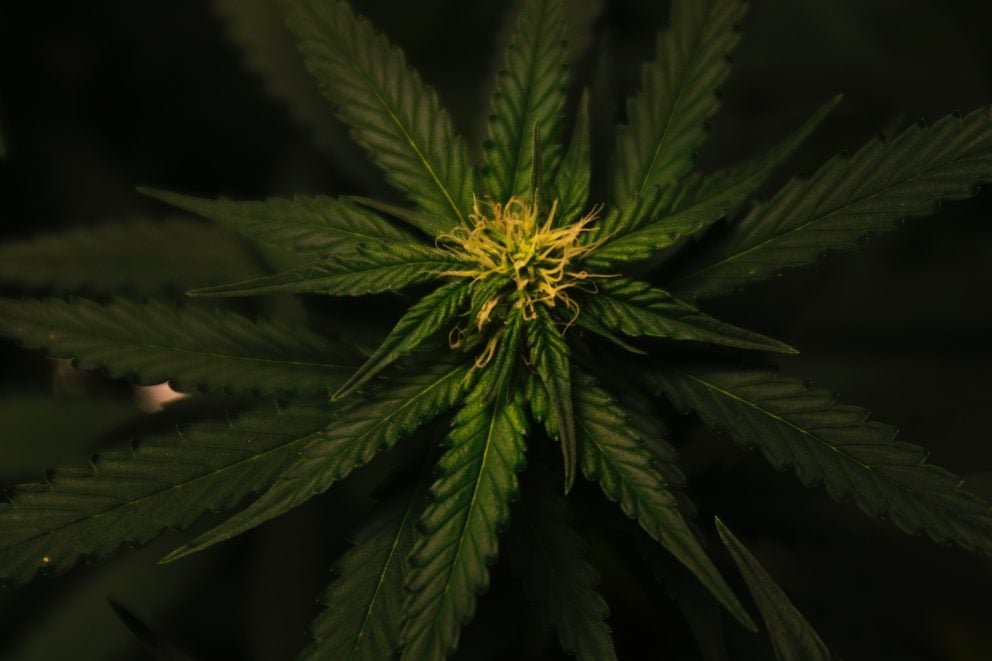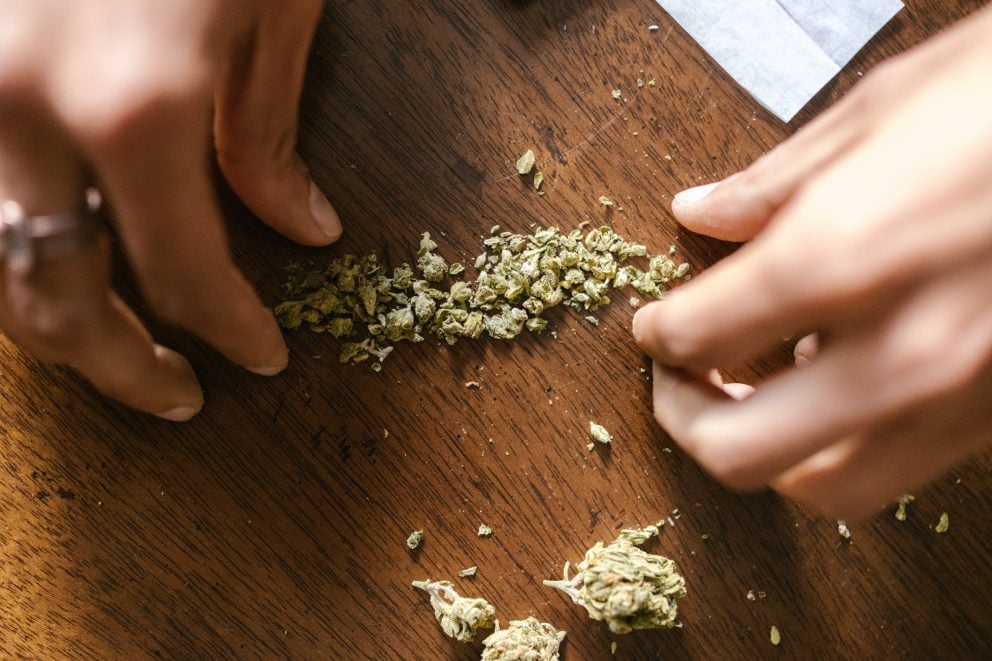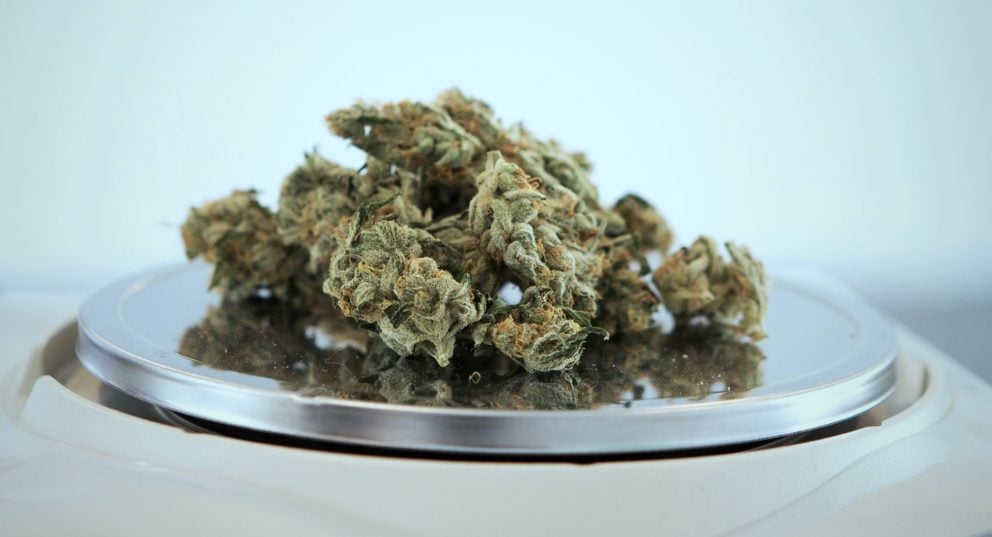
Photo by Washarapol D BinYo Jundang
As medical marijuana expands across the nation, we’re becoming more collectively aware of how the various compounds in cannabis work. In addition to the THC that gets you high and cannabinoids like CBD and CBN with their health benefits, there are terpenes that create the different scent and flavor notes of cannabis.
These compounds all combine to create what is known as the entourage effect. The blend of cannabinoids, terpenes, and even flavonoids all combine and interact differently with our bodies to create the blend of experiences you feel when you consume cannabis. This singular experience caused by these various chemical interactions is why it’s called the entourage effect.
If you’ve ever wondered why different cannabis strains can vary in strength, intensity, and how they make you feel it’s ultimately the entourage effect. So exactly what is the entourage effect? This post will explain the behind-the-scenes chemical reactions that help create what you feel when using cannabis.
What is the Entourage Effect?
There are over 150 compounds in cannabis that can all engage with our endocannabinoid system throughout the human body. For example, THC can make you high, CBD is an anti-inflammatory, and CBG might make you sleepy. The combination of these compounds working together is what scientists call the entourage effect.
When you think of an entourage you may think of the group of people following celebrities, they might even be using cannabis, but you don’t necessarily think of biochemistry. The name is meant to highlight the chemical process of multiple chemical reactions having one singular effect.
This synergy of chemical interactions asserts that the sum of all of the different cannabinoids, terpenes, and flavonoids in cannabis provides an effect that is ultimately greater than the sum of the individual contributions of each of those chemicals.
This is because of how these compounds work. The endocannabinoid system is like a series of dials for various biological functions. Some of them turn up biological processes like hunger, with the munchies, or turn down others like inflammation.
The entourage effect focuses on the sum of these compounds because some of their interactions can counteract, boost, or inhibit how others work. For example, did you know black peppercorns can help you sober up from weed if you’ve gotten too high? The reason: the terpenes pinene and beta-caryophyllene help counteract the anxiety caused by too much THC.
This one interaction highlights how terpenes and cannabinoids can interact. When you compare that one interaction to the hundreds of compounds in cannabis at work they sum up the entourage effect. So what are some of these reactions? Before highlighting specific reactions let’s get the lay of the land about what is in cannabis.
When you hear about products like extracts or edibles that are “full-spectrum,” they contain the full spectrum of cannabinoids, terpenes, and other active compounds to better make use of the entourage effect.
Terpenes and Cannabinoids
When you think of the psychoactive properties of cannabis you mostly think of THC. You may think of CBD for its anti-inflammatory or relaxation benefits. This is just the tip of the iceberg with regard to cannabinoids.
There are over 100 cannabinoids in cannabis including THC, CBD, CBG, and CBN to name a few. There are also all of the acid forms of these cannabinoids that exist before they’re decarboxylated. There’s even a newly discovered compound called THC-P that’s 33 times stronger than THC.
THC-P is often found in concentrations of less than 0.1% but this can explain why some strains can get you higher than others. That’s the entourage effect. Cannabis strains can not only have different concentrations of THC but a whole host of other cannabinoids. It’s also not just cannabinoids at work.
Photo by Rondae Productions
There’s a total of 540 chemical substances in cannabis including terpenes. Cannabis contains more than 150 types of terpenes. Terpenes are responsible for the scent and flavor of different plants.
Part of the skunky aroma of cannabis as well as the various fruit and other scent notes that cannabis connoisseurs describe at dispensaries are those terpenes. Besides adding to the scent profile of cannabis, terpenes have a series of health benefits.
Alpha-pinene can have gastrointestinal benefits. Terpenes like pinene and linalool also have anti-inflammatory properties that can work together with CBD to increase the ultimate anti-inflammatory effect.
Besides cannabinoids and terpenes, cannabis also contains flavonoids. Flavonoids are often simply called antioxidants and have countless health benefits. There are even omega fatty acids found in cannabis.
Plants have a series of chemicals that help keep them alive whether to deter pests, increase pollination, or protect them from UV radiation. These compounds work differently in humans and have their own host of health benefits.
Do Terpenes Have THC?
The average person doesn’t have a deep understanding of organic chemistry. However, more medical marijuana studies mean these confusing chemical reactions are getting clarified for the public. So you may wonder, do terpenes have THC?
THC’s chemical name is Delta-9-tetrahydrocannabinol (THC) and is a cannabinoid. Terpenes have different chemical breakdowns and despite their similar sounding name, they are a different class of phytochemicals, chemicals made by plants. While terpenes can interact with THC they do not contain any THC.
What Gets You High THC or Terpenes?
THC is the compound in cannabis that is responsible for the psychoactive effect that gets you high. While there are other chemicals found in cannabis that can be psychoactive like delta-8, delta-10, HHC, and even a few terpenes, they have some mild psychoactive effects.
THC is the compound that traditionally gets you high. Given the entourage effect, some terpenes can help accentuate your high but they are not directly involved with the intoxicating effects of cannabis. This is why THC is the main line between what makes a cannabis plant marijuana and what makes it hemp.
[fl_builder_insert_layout id=13138]
Does CBD Cancel THC?
Word on the street is often that CBD will cancel out THC. For example, if you’ve gotten too high you may be encouraged to try CBD. However, like with the indica vs. sativa debate, some of this is just anecdotal evidence. There are studies on both sides of whether CBD will cancel out THC.
Realistically and to use more confusing organic chemistry terminology, CBD is a non-competitive negative allosteric modulator. Essentially, CBD can bind to CB1 receptors in a different section than THC. It doesn’t directly inhibit THC but it does make it a tad more difficult for THC to bind as easily.
CBD Mixed With THC
While the science is still in contention, cannabis enthusiasts will default to some strains and how they may affect you. For example, Leafwell put together this helpful list of CBD & THC strains and their potential effects:
- Low THC + High CBD may have little-to-no psychoactive effects.
- High THC + Low CBD will be psychoactive, but low amounts of CBD can dampen THC’s effects or delay the time it takes for THC to “hit.”
- High THC + High CBD can be psychoactive and sedative. CBD can increase the amount of time THC spends in the body.
- Low THC + Low CBD can perhaps have an energizing effect, with CBD potentially enhancing THC’s psychoactivity.
- An equal ratio of THC + CBD will be psychoactive but can be less than how THC will function on its own.
Does CBD Counteract THC?
So CBD doesn’t exactly cancel out THC. There’s no clear tit-for-tat ratio that has been proven in scientific studies. However, CBD is generally thought to be neuroprotective. Some studies have examined how CBD interacts with THC proving that it can counteract some of the negative effects like anxiety.
Another study has shown CBD can temper the intoxicating effects. Other studies show CBD can actually boost the intoxicating effects of THC. CBD also does not directly reduce the adverse effects of THC on cognition and mental health.
While CBD has been shown to be neuroprotective against neurological diseases there’s no clear direct relationship with regards to THC as it can vary. It can temper some of the anxiety effects of a THC overdose but it can also boost some of the intoxicating effects.
This is also connected to the entourage effect. Given the nature of these hundreds of compounds working together, there’s still a growing study of isolated cannabinoids and their direct relationships to your body and each other.
Benefits of CBD and THC Together
Regardless of whether CBD will or won’t shut down THC, there are benefits to them working together. CBD can help temper some of the more stressful aspects of THC, including intoxication, sedation, and tachycardia (fast heartbeat), and also contributes to the analgesic, antiemetic, and anti-carcinogenic properties.
CBD can naturally help you relax. CBD can also help increase the anti-inflammatory aspects of THC and help patients who use THC to manage pain. Essentially, while they don’t necessarily counteract each other they can increase each other’s efficacy.
CBN and THC Together
Cannabis doesn’t quite expire, but as it degrades it becomes CBN (Cannabinol). It’s a cannabinoid that’s known to make you tired and can help you sleep. So your old weed, if not moldy, just might be a great insomnia cure.
Combining THC and CBN can increase cannabis’s natural sedative properties. They will work together to help boost your sleepiness. Since THC is a precursor to CBN, when combined they can amplify each other.
CBG and THC Together
On the other side of THC development, CBG is the mother of all cannabinoids. Through various chemical reactions, CBG will become CBD, THC, CBN, and so on. CBG has a ton of benefits.
CBG has natural antibacterial properties that help the cannabis plant. When pitted against MRSA, CBG acted similarly to vancomycin, an extremely strong antibiotic.
CBG tells the body to stop absorbing serotonin, when combined with the euphoria caused by THC it can help improve your mood and help tackle depression and anxiety.
CBD increases anandamide levels in the brain which prevents enzymes from breaking down anandamide. Low anandamide levels are linked to symptoms of depression.
Photo by Budding . on Unsplash
Who Discovered the Entourage Effect?
Dr. Raphael Mechoulam, who discovered THC and continued cannabis research well into 2020, coined the term the entourage effect with Dr. Shimon Ben-Shabat in 1999. They described the increased effect that cannabinoids can have when they are together, instead of when each is used in isolation.
This is why pure or higher concentrations of THC like in crystalline, dabs, or dronabinol can function differently and have a different effect on your body. They can be more likely to cause anxiety or the negative symptoms of THC overdose because they’re not tempered by cannabinoids or terpenes.
Is the Entourage Effect Only From Cannabis?
Given everything you’ve read you may wonder do other plants have an entourage effect.
Other plants, roots, and fungi commonly used for medical purposes also contain several active compounds that can work with or against each other.
One example of this is turmeric, which has the anti-inflammatory compound curcumin. Combining curcumin with the terpene piperine (found in black pepper) enhances the serum concentration, extent of absorption, and bioavailability of curcumin. Your favorite curry just might be working together to heal you.
Pinene, linalool and octanol contribute work together to boost the topical anti-inflammatory and analgesic activities of frankincense. Who knew?
Final Thoughts
This series of chemical reactions that add up to the sum of your physical experience with cannabis is the entourage effect. This entourage of cannabinoids, terpenes, flavonoids, and other chemicals is part of what is driving medical marijuana.
The benefit to increased legalization is more study is going into these individual compounds, how they interact together and unlocking the vast healing potential of cannabis.
We are still at the tip of the iceberg of the potential for cannabis, consider getting your medical marijuana card to see for yourself how these compounds work to help you heal yourself.



